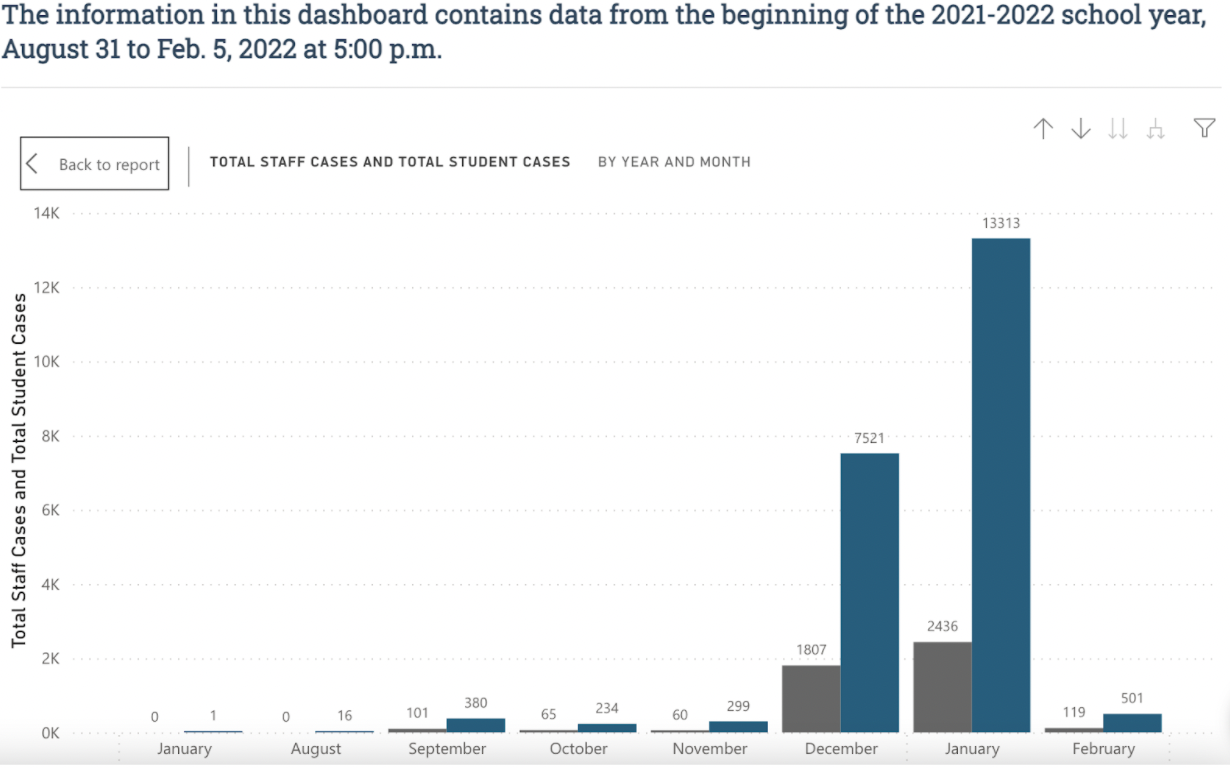Positive test? Here's how to handle it best
A guide on what to do after testing positive.
Where first names are used, names have been changed to protect the identity of the source.
Imagine you are holding a 3" x 0.5" x 0.25" plastic COVID-19 test which holds the fate of your future. You look down and two thin, pink slivers catch your eyes. Panic, stress and anxiety course through your veins ‒ you’ve tested positive. But now what?
With school in-person, COVID-19, has spread extensively among students, teachers and administrators. Hundreds of Blair students have tested positive, with a peak in cases during January. With the rise in cases, students and staff constantly received a disarray of information and rules to process from MCPS.
If a student tests positive, the first step is to fill out the MCPS COVID-19 reporting form. According to the MCPS website, students who are symptomatic are required to quarantine for 10 days, monitor their symptoms for 14 days from the date of testing, and can only return once all symptoms disappear. Those who are asymptomatic and vaccinated do not need to quarantine after testing positive. However, unvaccinated students have to quarantine for 10 days regardless of whether they are symptomatic.
Blair communicated well with students who tested positive. Sophomore Jane praises Blair administration's quick and detailed response to her positive PCR test. The school emailed her the day after she filled out the form, containing Zoom links for teacher check-ins, the date of her return, and options for how to attend school during isolation.
In order for quarantined students to keep up with their coursework, teachers are supposed to provide them with virtual "office hours", where students can check in. However, if communication between the student and teacher starts to falter, students often feel anxious and worried, such as in the case of sophomore Michael. "I was really stressed over this one thing . . . there was this one grade which I kept on emailing [my teacher] about. The first email was like a Monday or Tuesday, [and] he didn’t get back to me. He only started responding quicker and quicker as the deadline came," Michael explains.
Michael also faced the issue where his teachers weren't available during the Zoom office hours, which added to his stress. "I joined all the office hours and none of them were there. For all of my teachers," Michael says.
On the other hand, teachers and staff face different quarantine guidelines and challenges than students. They must quarantine for five days if they test positive, regardless of vaccination status. After five days, they may return to school if they do not have any symptoms and can wear a well-fitting mask when around other people. If they are unable to wear a mask, such as during lunch, or still feel symptoms, they should quarantine for five more days.
According to teacher Sarah, unlike students, staff have a lengthy process in order to quarantine. Sarah emailed her department head, put in for a sub, made lesson plans, and filled out forms to get COVID leave.
Especially with a shortage of substitute teachers, teachers face the stress of continuing to work while also recovering from COVID-19. Sarah requested substitutes for the days that she was quarantined, but there were none available. Other teachers had to fill in for those days. "It's just hard, because you're still putting in the hours, making the lesson plans that hopefully subs can do and students aren't wasting an hour and a half of their day in your class while you're out . . . I think if I had more time to sleep and actually like convalesce, then I don't think it would be as bad as it has been," Sarah says.
Sarah advises that teachers should rest more when they are in quarantine. "Take it easy . . . If you feel like you can do some work, do some work to keep your brain busy, I know a lot of people aren't good at sitting around, but also don't feel pressure to work yourself so that you stay sick longer," Sarah says.
For students, Jane emphasizes that communication is a key aspect to quarantine. "Don't panic . . . Make sure that you tell everyone that you had close contact with and just communicate well with others during the process. Don't be afraid to reach out for help in your classes," Jane says.
According to Board of Education Vice President Karla Silvestre, if another variant or breakout occurs, MCPS will decide whether schools should transition to virtual learning on a school by school basis. “[It's all based on] a combination of factors. They look at how many kids are absent, if there are staff shortages because their staff are quarantined, if there is a lack of busing because of bus drivers quarantining, and just the general high positive covid rates in that school," Silvestre says.
Despite many modifications to the regulations and guidelines for quarantine and positive cases,
Silvestre believes that this model is the best solution to handle COVID-19 cases. "There's going to be other waves, new variants, and now we have this new model that we can use that we feel is appropriate,” Silverstre says. “It's just more options that will better prepare us for what comes ahead."
Tags: COVID-19
Celine Wu. Hi everyone! My name is Celine, and I am the business editor. I play volleyball for high school and MetroVBC. In my free time, I solve logic puzzles and play with my two fat cats. I also bake cakes for profit; my most popular cake … More »
Comments
No comments.
Please ensure that all comments are mature and responsible; they will go through moderation.

